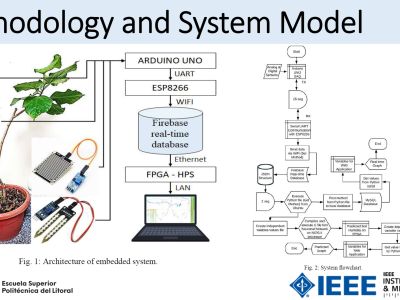High-resolution millimeter wave pseudo-images collected using a commercial handheld scanner for concealed object detection

- Citation Author(s):
-
Hadi Mahdipour (University of Oviedo, Spain)Jaime Laviada (University of Oviedo, Spain)Fernando Las-Heras (University of Oviedo, Spain)Mehdi Sookhak (Texas A&M University, Corpus Christi, Tx, USA)
- Submitted by:
- Hadi Mahdipour
- Last updated:
- DOI:
- 10.21227/t0pa-t236
Abstract
In this study, MMW data are collected using a commercial handheld scanner (Vayyar's ECS2000), focusing on localized scans of the human body. The collected data are complex-valued (CV) high-resolution local 3D pseudo-images over a volume of 13×13×10 cm with spatial resolutions of 1.6 mm, 1.6 mm, and 4.3 mm in the x, y, and z directions, respectively. The compact, portable ECS2000 Vayyar's MMW scanner is built around a single RF board working in the frequency range of [60.4-69.9] GHz, housing transmitting and receiving antennas in a multiple-input multiple-output (MIMO) setup. In particular, its 240 antennas are utilized for 3D CV data capturing where a localized part of a body can be scanned by that radar. The radar's receivers capture high-resolution 3D reflections, which are processed to generate granular imaging data containing both intensity and phase information. For each captured 3D snapshot, the resolutions in the x, y, and z directions are 1.6 mm, 1.6 mm, and 4.3 mm, respectively. The spatial range of captured data in these directions are [8.2–139.7] mm in x-direction, [8.2–139.7] mm in y-direction, and [151.3–249.4] mm in z-direction. The scanner is able to provide approximately 15 pseudo-images per second. Moreover, it is also capable of exporting raw IQ data of each antenna as well as the 3D pseudo-images. These high-resolution 3D pseudo images form the foundation for CV-based processing in this paper. The dimensions of the input for the CV-CNN are N×W×H×C, where N is the number of input samples, W and H show width and height of the input (pseudo) image and C shows the number of channels for each input. Based on the preprocessing parameters and experimental setup, W=H=81, and C=1. The dataset for the proposed CV-FL-based CO detection framework is meticulously designed to encompass diverse and representative scenarios. The data acquisition process involved the use of an MMW radar configured to generate CV pseudo-images of various concealed objects under multiple clothing configurations resulting in N=60,000. The inclusion of five different clothing sets resulted in five distinct datasets. Each local CV-CNN (four in total, corresponding to the four edge nodes) was independently trained by one of these datasets to maintain isolation during training. A fifth dataset, completely unseen by local models during training, was reserved exclusively for evaluating the final trained CV-FL model.
Instructions:
Regarding the CV nature of each preprocessed frame for saving, real and imaginary parts are rescaled to [0-255] range separately to have two 81*81 gray images for real and imaginary parts respectively. Then they are concatenated together as a 162*81 PNG image to be saved as a CV frame. While 5 different datasets are uploaded, each data set has two folders of "Train" and "Test".
 173 views
173 views








Version 1- 06 January 2025